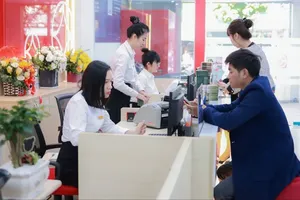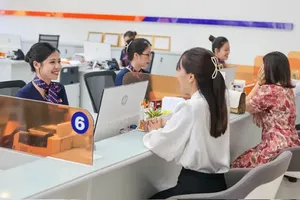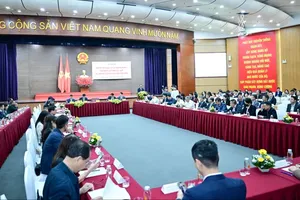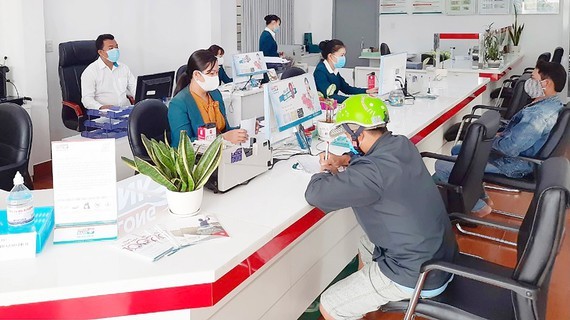 Customers do transactions at Kienlongbank. (Photo: SGGP)
Customers do transactions at Kienlongbank. (Photo: SGGP)
Expectations of recovery in the new normal state
Although credit growth in the past nine months remained optimistic, especially in the context of complicated developments of the Covid-19 pandemic, compared to the end of August, credit in September recorded a negative growth when the outstanding balance of the whole economy fell by VND23 trillion. In Ho Chi Minh City alone, nine-month credit increased by about 6.41 percent compared to the end of last year, but much lower than the growth rate of the whole industry while it was always higher. In the third quarter of this year alone, credit in HCMC only increased by 0.76 percent compared to the second quarter of this year and the lowest compared to the previous two quarters. Mr. Nguyen Hoang Minh, Deputy Director of the State Bank of Vietnam (SBV)-HCMC Branch, explained that the pandemic had caused all production and business activities in the area to stall. Many factories had had to reduce capacity or halt production to fight the pandemic, so it had a significant impact on the credit activities of banks. Moreover, banking operations also encountered difficulties and obstacles related to travel restrictions, making access to the disbursement of new loans grueling, thereby affecting credit growth.
According to the SBV-HCMC Branch, with the Covid-19 pandemic gradually being controlled, along with the plan to reopen the economy, credit growth in HCMC is forecasted to recover in the fourth quarter. At present, some districts in HCMC, namely District 7, Can Gio District, and Cu Chi District, have controlled the pandemic and are on a roadmap to restore production and business activities. This trend will expand when the pandemic situation is improved, and herd immunity is achieved, as the ratio of people in HCMC getting the first dose of the Covid-19 vaccine is on the increase. Under such conditions, capital demand will rise again. Mr. Nguyen Hoang Minh also said that this agency would direct commercial banks to deploy the program to connect banks and businesses to best meet the capital needs to restore and develop production and business activities in the new normal state. At the same time, it would promote business support programs under the direction of the Government, the SBV, and the People's Committee of HCMC to contribute to the economic recovery of the city.
Mr. Nguyen Tuan Anh, Director of the SBV Department for Credit for Economic Sectors, forecasted that the credit scenario would recover strongly from October and the last two months of 2021. The SBV will have an interest rate compensation package of VND3 trillion, equivalent to an outstanding balance of more than VND100 trillion, to be pumped into the economy in the near future to support people and businesses. “The credit target of this year is 12 percent, but it is flexible. If necessary, it can still be expanded to create the most favorable conditions for businesses to borrow capital," said Mr. Anh.
Ensuring sufficient capital for production and business activities
Mr. Dao Minh Tu, Standing Deputy Governor of the SBV, said that he would consider and adjust the credit room for commercial banks to ensure sufficient capital supply for enterprises to resume production and business activities. However, he emphasized that this expansion of the credit growth room relies on the basis that commercial banks must balance capital sources, evaluate the effectiveness of loan plans, and take responsibility for credit grant decisions. Therefore, the SBV has recently required commercial banks to strictly control the growth rate of credit balance and credit quality for sectors with potential risks or seriously affected by the Covid-19 pandemic, especially outstanding loans in the real estate sector for personal use purposes. It prioritizes and focuses on giving loans to industries and sectors that encourage and serve production, import-export, and international payment to create conditions for businesses and people to access credit sources to recover production and business activities after the Covid-19 pandemic.
Analysts of SSI Securities Company assessed that the SBV would continue to maintain the loose monetary policy in the coming time. And one of the main measures is to increase the credit room to facilitate commercial banks to cut lending interest rates further. Lately, it is recorded that many commercial banks have been granted additional credit rooms by the SBV. Specifically, Techcombank and TPBank have just been granted the highest credit room at over 17 percent. Some other commercial banks, such as MSB, MBBank, and ACB, are also allowed to increase their credit room to 9.5-15 percent. SBV’s permission will help commercial banks have more room to finance businesses to restore production and business activities.
The leader of a commercial bank in HCMC said that the bank's credit room remained available, so it would consider giving loans to businesses that need and qualify for loans according to regulations. Credit growth may recover in the last three months of the year. However, it will not make a breakthrough like in previous years because credit growth depends heavily on Covid-19 control and the capital absorption capacity of the economy.
Although credit growth in the past nine months remained optimistic, especially in the context of complicated developments of the Covid-19 pandemic, compared to the end of August, credit in September recorded a negative growth when the outstanding balance of the whole economy fell by VND23 trillion. In Ho Chi Minh City alone, nine-month credit increased by about 6.41 percent compared to the end of last year, but much lower than the growth rate of the whole industry while it was always higher. In the third quarter of this year alone, credit in HCMC only increased by 0.76 percent compared to the second quarter of this year and the lowest compared to the previous two quarters. Mr. Nguyen Hoang Minh, Deputy Director of the State Bank of Vietnam (SBV)-HCMC Branch, explained that the pandemic had caused all production and business activities in the area to stall. Many factories had had to reduce capacity or halt production to fight the pandemic, so it had a significant impact on the credit activities of banks. Moreover, banking operations also encountered difficulties and obstacles related to travel restrictions, making access to the disbursement of new loans grueling, thereby affecting credit growth.
According to the SBV-HCMC Branch, with the Covid-19 pandemic gradually being controlled, along with the plan to reopen the economy, credit growth in HCMC is forecasted to recover in the fourth quarter. At present, some districts in HCMC, namely District 7, Can Gio District, and Cu Chi District, have controlled the pandemic and are on a roadmap to restore production and business activities. This trend will expand when the pandemic situation is improved, and herd immunity is achieved, as the ratio of people in HCMC getting the first dose of the Covid-19 vaccine is on the increase. Under such conditions, capital demand will rise again. Mr. Nguyen Hoang Minh also said that this agency would direct commercial banks to deploy the program to connect banks and businesses to best meet the capital needs to restore and develop production and business activities in the new normal state. At the same time, it would promote business support programs under the direction of the Government, the SBV, and the People's Committee of HCMC to contribute to the economic recovery of the city.
Mr. Nguyen Tuan Anh, Director of the SBV Department for Credit for Economic Sectors, forecasted that the credit scenario would recover strongly from October and the last two months of 2021. The SBV will have an interest rate compensation package of VND3 trillion, equivalent to an outstanding balance of more than VND100 trillion, to be pumped into the economy in the near future to support people and businesses. “The credit target of this year is 12 percent, but it is flexible. If necessary, it can still be expanded to create the most favorable conditions for businesses to borrow capital," said Mr. Anh.
Ensuring sufficient capital for production and business activities
Mr. Dao Minh Tu, Standing Deputy Governor of the SBV, said that he would consider and adjust the credit room for commercial banks to ensure sufficient capital supply for enterprises to resume production and business activities. However, he emphasized that this expansion of the credit growth room relies on the basis that commercial banks must balance capital sources, evaluate the effectiveness of loan plans, and take responsibility for credit grant decisions. Therefore, the SBV has recently required commercial banks to strictly control the growth rate of credit balance and credit quality for sectors with potential risks or seriously affected by the Covid-19 pandemic, especially outstanding loans in the real estate sector for personal use purposes. It prioritizes and focuses on giving loans to industries and sectors that encourage and serve production, import-export, and international payment to create conditions for businesses and people to access credit sources to recover production and business activities after the Covid-19 pandemic.
Analysts of SSI Securities Company assessed that the SBV would continue to maintain the loose monetary policy in the coming time. And one of the main measures is to increase the credit room to facilitate commercial banks to cut lending interest rates further. Lately, it is recorded that many commercial banks have been granted additional credit rooms by the SBV. Specifically, Techcombank and TPBank have just been granted the highest credit room at over 17 percent. Some other commercial banks, such as MSB, MBBank, and ACB, are also allowed to increase their credit room to 9.5-15 percent. SBV’s permission will help commercial banks have more room to finance businesses to restore production and business activities.
The leader of a commercial bank in HCMC said that the bank's credit room remained available, so it would consider giving loans to businesses that need and qualify for loans according to regulations. Credit growth may recover in the last three months of the year. However, it will not make a breakthrough like in previous years because credit growth depends heavily on Covid-19 control and the capital absorption capacity of the economy.







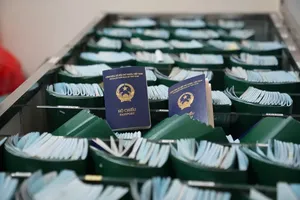
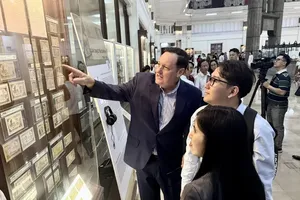

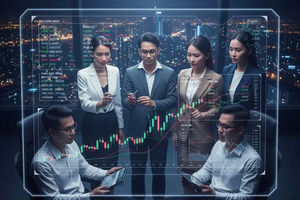
)

)


